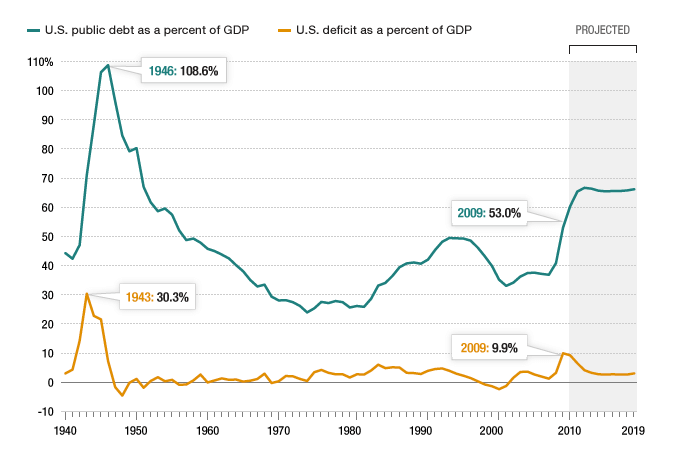As regular readers are aware, I am spending time this week attacking GDP as the ultimate benchmark for measuring the strength of the economy. On Monday, in Part One of the series, I noted that GDP includes government spending even though government spending does not necessarily benefit consumers. Yesterday, in Part Two of the series, I addressed another problem with GDP: it overemphasizes consumer spending to the detriment of capital investment.
Today, I want to show how an overemphasis on the GDP measure can encourage less efficient ways of satisfying consumers’ preferences — and indeed, can encourage destruction of resources. In this way, GDP favors busywork over an actual improvement in consumers’ standard of living. As we will see, this nonsense leads the Krugmans and Keyneses of the world to say it would be a great idea to dig pointless holes — or to prepare for a Martian invasion that will never happen — as long as people are busy!!!
In this post I am borrowing heavily from this excellent blog post by Alex Zorach, which makes the points I want to make quite effectively. I recommend clicking through and reading it, since my post is little more than an attempt to summarize the points made by Zorach.
Zorach’s first point is that a less efficient way of doing something can lead to a higher GDP:
It is also worth noting how GDP counts goods or services when they are sold and resold. Shipping and storage of goods are almost always counted in GDP, as these are considered services that are produced. So a product that is sold directly to the end user, at the point of production, will result in less of a contribution to GDP than a product which is produced, shipped, stored in a warehouse, and shipped again to the same end user for the same price plus shipping costs.
In other words: let’s say that a car manufacturer comes up with a way to sell cars direct to consumers for $20,000, as opposed to selling it through a dealer for $25,000.
It could be that the dealer adds sufficient value to justify that extra $5000. After all, the dealer handles shipping and storage costs that make it more convenient for the average consumer to purchase the car. He provides customers with a way to service their cars and enforce their warranties. In an unhampered market economy (which we don’t have in the case of auto sales; we have discussed here before how government puts its thumb on the scale), consumers can determine whether the value produced by the dealer is worth the extra cost. Some manufacturers would utilize dealers and others would sell direct, and the best sales model would win out.
But assume that a car manufacturer finds a way to cut out the middleman in a way that most consumers prefer. In such a scenario, in an unhampered market economy, dealers will go out of business — and they should. The land used by the dealership will be sold to a company that can put it to better use. The people working for the dealership will have to go find new jobs that are more productive for the economy. But consumers will be far better off. They can get the car for less money, and if the manufacturer finds a more efficient way of delivering and servicing the car, consumers are ultimately in a better position.
The dealerships’ employees will temporarily be worse off — but that is the tradeoff we make in an unhampered market economy. The “creative destruction” of businesses that are not satisfying consumers’ preferences ensures that scarce resources are allocated in the manner that best satisfies those preferences. In other words, the dealerships’ employees will need to find something to do that delivers value — that consumers want. Once they do, they will once again be successful.
But whether a car dealership adds value or not, GDP will be larger if the dealer is involved. That’s because $25,000 is a higher number than $20,000. So if your only desire is to maximize GDP, you’ll pass laws to keep dealers in business — even if market forces dictate that direct sales are preferable, and that the resources spent on dealerships are best reallocated to different parts of the economy.
Ah, but it gets worse. As Zorach points out, GDP also increases when things are destroyed. Imagine a car accident. In its aftermath, GDP increases.
Between health insurance, car insurance, out of pocket expenses, a lot of money changes hands. . . . [T]he medical care, any car repair work, and new cars purchased, and any legal fees, is all included in GDP. Furthermore, the incremental rate by which everyone’s insurance premiums go up to pay for this accident results in more payments to insurance companies, which is also included in GDP. The net effect of the accident is to produce a substantial increase in GDP. Most alarmingly, the more destructive the accident, the greater the increase in GDP.
While it is necessary to have a section of the economy that deals with car accidents, we can all agree that it’s better for citizens when there are fewer car accidents. Yet more accidents equal a bigger economy.
Why is this a problem? Because when we analyze the economy, we’re doing so in order to create a better standard of living for consumers. But when your only incentive is to increase GDP, you don’t care whether eliminating the middleman benefits consumers (as in the first point above) or even your actions are destroying wealth (as in the second point above). All you care about is making people do busywork, even if it does not contribute to a net increase in people’s living conditions.
Do Keynesian economists recognize this fallacy? Nope, not even the Nobel prize winners. Paul Krugman believes that even pointless activity is a good thing, as long as it’s activity. For example, Krugman favorably cited this passage from Keynes in a 2008 blog post:
If the Treasury were to fill old bottles with banknotes, bury them at suitable depths in disused coalmines which are then filled up to the surface with town rubbish, and leave it to private enterprise on well-tried principles of laissez-faire to dig the notes up again (the right to do so being obtained, of course, by tendering for leases of the note-bearing territory), there need be no more unemployment and, with the help of the repercussions, the real income of the community, and its capital wealth also, would probably become a good deal greater than it actually is.
Absurd. In a similar analogy, Krugman said that preparing for an invasion of space aliens would make the economy better off, even if the invasion turned out to be imagined:
If we discovered that, you know, space aliens were planning to attack and we needed a massive buildup to counter the space alien threat and really inflation and budget deficits took secondary place to that, this slump would be over in 18 months. And then if we discovered, oops, we made a mistake, there aren’t any aliens, we’d be better [off].
Ridiculous. As David McIlroy explains:
These people honestly believe that money spent — no matter why it’s spent or the effects of the spending — is the same as creating growth. They don’t understand that if the spending produces nothing of value, the amount of overall value in the economy is lowered and that the average standard of living must go down.
Krugman might tell you that having useless car dealers around would be good — if they would increase GDP. He might even tell you that car accidents are good — if they would increase GDP. He and the rest of the Keynesians think that any economic activity is good. They don’t care whether it makes your life better . . . or doesn’t.
And this has important real-life consequences, because Our Betters in Government listen to guys like this, and implement policies to further Krugman’s wrong-headed goals.
Now that you understand what is driving their warped thinking, you will be better prepared to spot the fallacies in these arguments.
Reject GDP as the be-all and end-all of economic analysis.



